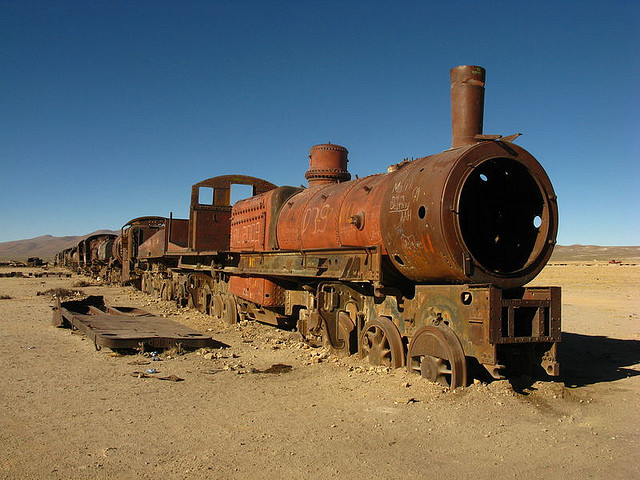Tracking Toward The Future
 It’s difficult to do something for the first time. Whether it’s a new approach, a new technology, or a new campaign, the mass of the past pulls our behavior back toward itself. And sadly, whether the past has been successful or not, its mass, and therefore it’s pull, are about the same. The past keeps us along the track of sameness.
It’s difficult to do something for the first time. Whether it’s a new approach, a new technology, or a new campaign, the mass of the past pulls our behavior back toward itself. And sadly, whether the past has been successful or not, its mass, and therefore it’s pull, are about the same. The past keeps us along the track of sameness.
Trains have tracks to enable them to move efficiently (cost per mile), and when you want to go where the train is heading, it’s all good. But when the tracks are going to the wrong destination, all that efficiency comes at the expense of effectiveness. Like we’re on rails, company history keeps us on track, even if it’s time for a new direction.
The best trains run on a ritualistic schedule. People queue up at same time every morning to meet their same predictable behemoth, and take comfort in slinking into their regular seats and turning off their brains. And this is the train’s trick. It uses its regularity to lull riders into a hazy state of non-thinking – get on, sit down, and I’ll get your there – to blind passengers from seeing its highly limited timetable and its extreme inflexibility. The train doesn’t want us to recognize that it’s not really about where the train wants to go.
Trains are powerful in their own right, but their real muscle comes from the immense sunk cost of their infrastructure. Previous generations invested billions in train stations, repair facilities, tight integration with bus lines, and the tracks, and it takes extreme strength of character to propose a new direction that doesn’t make use of the old, tired infrastructure that’s already paid for. Any new direction that requires a whole new infrastructure is a tough sell, and that’s why the best new directions transcend infrastructure altogether. But for those new directions that require new infrastructure, the only way to go is a modular approach that takes the right size bites.
Our worn tracks were laid in a bygone era, and the important destinations of yesteryear are no longer relevant. It’s no longer viable to go where the train wants; we must go where we want.
 Mike Shipulski
Mike Shipulski
It is and was the best technology at the time; and some (like myself) are more comfortable with this technology then flight. However, flight is more direct and mostly on schedule as well. Innovation is built on knowns; and ‘tweeking’ some knowns to unknowns until it is tested. Man send messages by wire; then radio waves and now even by light. So innovation is a ‘risk’ and sometimes serendipitous in nature. Where not “post it notes” created in that manner?